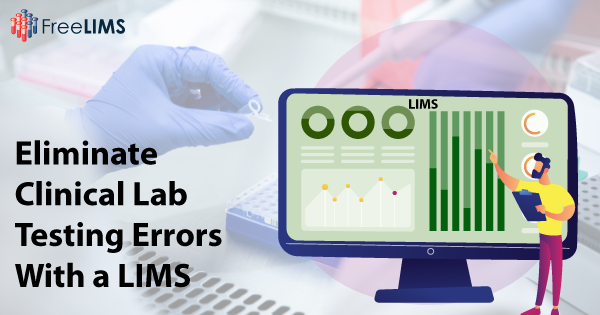To err is human. But when it comes to medicine, human error costs lives, about 98,000 each year to be precise. Accidental exposures to pathogens in a lab setting could result in major disease outbreaks or even pandemics, depending on the nature of the pathogen at hand. A case in point is the highly pathogenic and airborne-transmissible avian influenza virus, that was accidentally released from the Ron Fouchier labs in the Netherlands and Yoshihiro Kawaoka labs in Madison Wisconsin. There are also theories that the SARS-CoV-2 virus, the pathogen responsible for the COVID-19 pandemic, originated from a laboratory in China. With such considerations in mind, prudence demands that every effort be made to prevent errors in clinical practice which includes errors that may occur in clinical diagnostic laboratories.
Errors in clinical laboratories can occur at different stages along the workflow; from ordering the test to interpreting, reporting, and acting on the results. Errors in the lab can be preanalytical, analytical, or post-analytical, with each stage increasing the likelihood of introducing errors. This blog provides helpful tips on how to reduce human error in a diagnostic testing lab.
1. Organize Your Lab
This is a basic but pivotal strategy to minimize errors in a fast-paced laboratory setting. Samples, reagents, test requisitions, standard operating procedures (SOPs), and all lab inventory should be kept nearby for quick access and should be organized and annotated correctly. Lab processes should be well documented and organized into workflows that all staff should be familiar with. Lack of organization causes mix-ups that can lead to major errors in the lab. A Laboratory Information Management System (LIMS) offers a seamless solution for effectively managing records, samples, standard operating procedures (SOPs), test requests, and laboratory inventory.
2. Systematically Manage Samples
Create a simple yet effective procedure for collecting ordered samples and ensure follow through by all staff. This should include who collects the sample, how much should be collected, instruments to be used, transportation and storage, and antiseptic protocols to be followed. A LIMS can help you seamlessly manage samples and associated metadata.
3. Use Barcodes
Handwritten labels can be misread and they may fade out with time. They are also prone to transcription errors which can have downstream effects. Barcodes, on the other hand, are less prone to errors or manipulation. They provide an efficient and effective way to keep track of samples throughout their entire lifecycle in the laboratory. A clinical diagnostics LIMS system can help you generate unique barcodes for samples and print labels, assuring complete sample traceability.
4. Calibrate Instruments
The importance of calibration cannot be overemphasized. You could be following the right procedures to analyze lab samples but if your instruments are not properly calibrated then all your good efforts will end in futility. Calibration compares the measurement of an instrument against a benchmark. This helps standardize measurements and guarantees the accuracy of results. Make it a practice to routinely calibrate your lab equipment to minimize errors. By utilizing a clinical diagnostics LIMS system, you can effectively manage the calibration history of instruments, schedule calibration activities, and proactively notify lab managers and staff before the designated calibration dates. This system guarantees that no scheduled calibration goes overlooked or neglected.
5. Minimize Distraction in the Lab
Distraction in the lab comes in different forms. This can range from loud music, noise, or even how other employees are dressed. The distracted lab staff is more prone to making errors than the focused staff. Ensuring that the lab environment is always conducive to work will go a long way in minimizing human error.
6. Manage Employee Competence
It is essential to ensure that laboratory personnel is not only trained in specific procedures but also demonstrate proven competence before being granted permission to carry them out. It is not enough that staff has credentials and is licensed to perform a task. The lab manager should ensure that staff are only assigned duties that they are competent in. Before competence has been verified, lab staff should be supervised and mentored. The implementation of a clinical diagnostics LIMS system empowers lab managers to efficiently oversee staff training and competence, ensuring that analysis tasks are exclusively assigned to capable personnel.
7. Automate Laboratory Workflows
Automation is the surefire way to eliminate human errors in a lab. A clinical diagnostics LIMS system allows labs to switch from manual and electronic spreadsheets to an automated system that takes over lab processes and workflows. A clinical diagnostics LIMS system supports end-to-end sample tracking and data management and encompasses hardware and software integration. In this way, LIMS supports preanalytical, analytical, and post-analytical testing processes. A clinical diagnostics LIMS system also supports SOP management, quality control, and compliance protocols not only to eliminate errors but also to improve the general productivity of the laboratory.
Conclusion
Modern laboratories have put in place several measures to minimize human errors in the lab that may have adverse ramifications. This includes having SOPs, policies, and procedures to direct activities that take place in the lab. Clinical labs are also held accountable by several regulatory frameworks, such as the 21 CFR and ISO standards. Laboratory staff are also trained to ensure that they have the prerequisite skills and competencies to perform their roles. However, human error in the laboratory is still rife just because “man is to error.” Thankfully, automation can easily eliminate human error significantly. A LIMS provides a unique opportunity for easy and swift automation. With a cloud-hosted clinical diagnostics LIMS, a lab can easily transition from a manual paper-based system that is error-prone to an automated and efficient system that can be accessed from anywhere using any internet-ready device.


